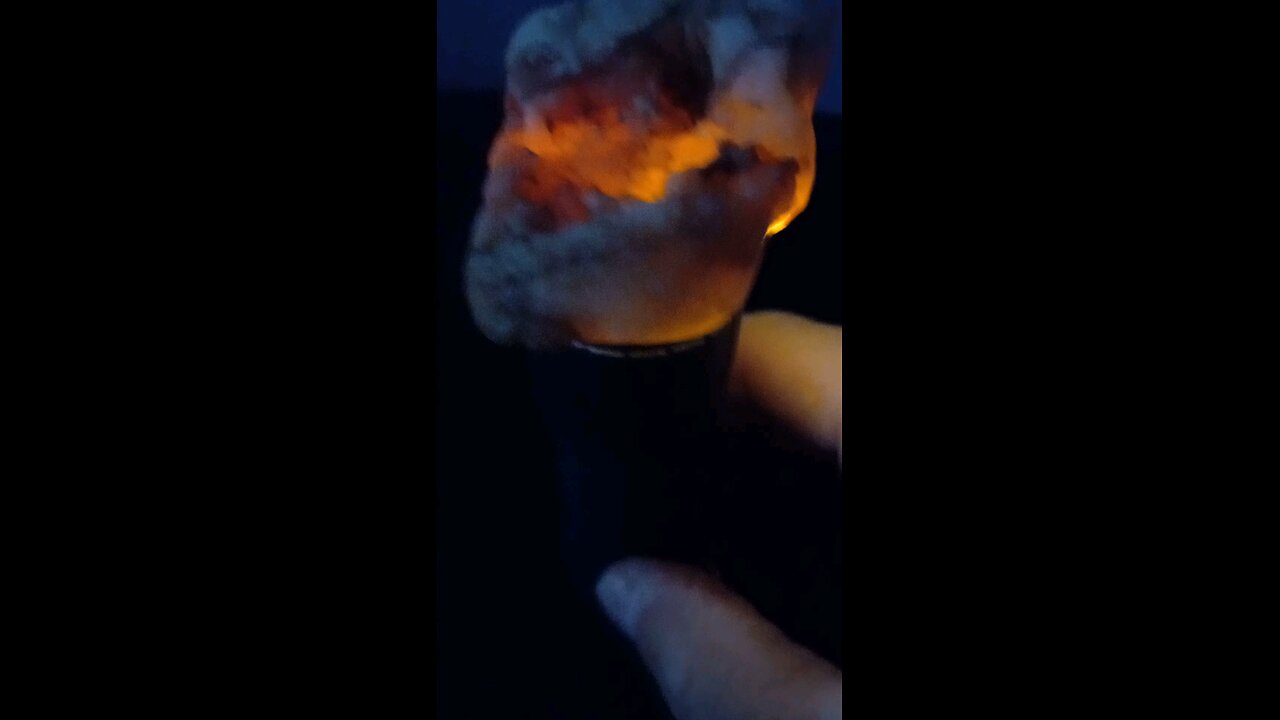Premium Only Content

Beautiful Glow Nodule!
If we consider the rock in the image to be quartz or a variety of quartz, here's how it might fit:
1. **Chalcedony**: As mentioned earlier, chalcedony is a type of quartz, specifically microcrystalline quartz. Its appearance can range from translucent to opaque, with colors influenced by impurities. The smooth, somewhat waxy luster and the mix of white with yellowish-brown in your rock could indeed fit chalcedony.
2. **Agate**: If there's any subtle banding not clearly visible in the image, it could be agate, a variety of chalcedony known for its fine grain and bright, attractive colors, often with bands or layers.
3. **Opal**: While not typically classified as quartz, opal can be associated with quartz deposits. However, its characteristic feature is its play-of-color, which isn't evident here. If it's common opal or opalite, it might lack this feature but still be related to quartz in geological context.
4. **Quartzite**: This is a metamorphic rock derived from sandstone, which is primarily quartz grains. If your rock has been subjected to metamorphism, the texture and color could be consistent with quartzite, especially if there's been some iron staining or if it's not fully recrystallized.
5. **Milky Quartz**: If the rock has a significant white component, it could be milky quartz, which is quartz with microscopic inclusions that give it a cloudy appearance. Given the context of quartz: -
**Chalcedony or Agate** seem like the most fitting categories for your rock if we're considering varieties of quartz. The smooth texture, potential for banding (even if not clearly visible in the image), and the color variation are all consistent with these forms.
Your rock's appearance aligns well with being a variety of quartz, particularly something like chalcedony or agate, based on its visual characteristics.
-
 0:58
0:58
RyanzRocks
1 day agoNye Beach Newport Oregon!
13 -
 1:29:23
1:29:23
Slightly Offensive
6 hours ago $9.37 earnedTop Secret CIA Docs LEAKED Showing the Austrian Painter SURVIVED | Nightly Offensive
49.2K35 -
 4:03:55
4:03:55
Saycred Angel Live
5 hours ago!JEEP🔥LET'S TURN THIS TUESDAY UP🔥!TANGIA #RUMBLETAKEOVER
30.3K -
 15:53
15:53
Producer Michael
10 hours agoWHY I MOVED TO LAS VEGAS! (CALIFORNIA IS DOOMED)
56.5K8 -
 9:05:08
9:05:08
Dabkillah
11 hours ago🔴LIVE-DABKILLAH-For The BEST CHAT and ok gaming lol
50.5K1 -
 4:15:17
4:15:17
Foaly's Pub
6 hours ago $1.15 earnedFOALY'S PUB GAME DEN #768(HALO INFINITE #175)
31.2K -
 1:31:31
1:31:31
Adam Does Movies
12 hours ago $1.94 earnedHanging Out, Talking Movies + YouTube Silver Play Button Unboxing! - LIVE!
40.6K2 -
 1:22:50
1:22:50
Glenn Greenwald
9 hours agoRight-Wing Populists Barred from Running in Democratic World; JFK Reporter Jeff Morley on CIA Involvement and his Testimony in Congress Today | SYSTEM UPDATE #432
133K56 -
 1:56:28
1:56:28
Anthony Rogers
5 days agoEpisode 359 - The Dark Side of Disney
19.1K1 -
 58:27
58:27
BonginoReport
9 hours agoMusk’s 13th Alleged Baby Mama’s Anti-Privacy Tour - Nightly Scroll w/Hayley Caronia (Ep.17)
159K80